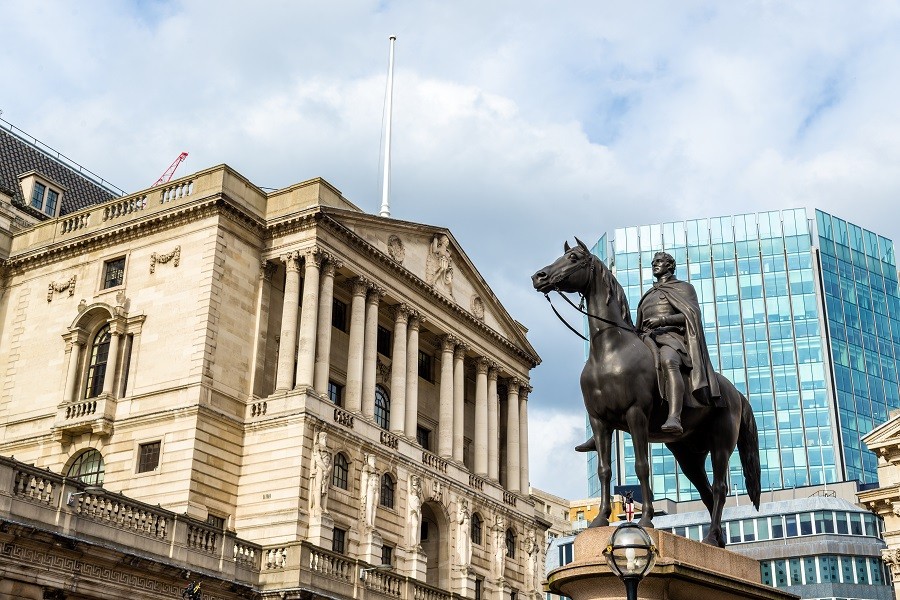2022 began with fleeting optimism after the COVID health pandemic gripped the global economy in a self-imposed lockdown for most of 2020 and 2021. Large scale effective COVID vaccinations and arguably milder symptoms from the more easily transmissible omicron variant allowed large swathes of Western economies to re-open. This drove expectations of economic rebound and a transitory inflation episode. It was hoped inflation would soon peak and then roll-over as global supply chains improved and, in the UK, Brexit disruptions would fade. However, it may be wise to remember COVID hasn’t gone – more on that later.
Optimism quickly evaporated early in January 2022 as US rate hike expectations were revised up which caused bond yields to rise (prices fell) and tensions between Russia and Ukraine unnerved investors causing risk assets to decline. In hindsight, Federal Reserve chair, Jerome Powell, may have sounded an early inflationary warning bell in November 2021 when he retired the term ‘transitory’ after months of frequently re-using the term. This appeared to reflect how inflation was spreading more broadly across goods and servicing. Yet, with inflation predominantly emanating from supply chain issues, the market felt there was little the Federal Reserve could do directly, to tackle global supply. Instead time, naturally, would heal COVID inflicted wounds.
Russia’s invasion of Ukraine in late February sent global shockwaves through markets. Flared geopolitical confrontation drove up market uncertainty which caused global equity markets to decline and commodity prices to spike. Russia is a key commodity exporter of oil and gas, wheat and fertiliser and, Ukraine’s fertile soils mean it too is a meaningful sunflower, wheat and corn exporter.
Hopes for a relatively quick Russia/Ukraine resolution failed. Negotiations collapsed, fighting intensified and Western sanctions on Russia have continued to ratchet upwards as the West seeks to wield its global financial clout against the Russian economy so as to twist Putin’s arm closer towards some form of begrudging resolution. The narrative of a temporary inflation peak has therefore been dealt a major setback as energy costs have jumped higher. Oil, for example, is up +55% year to date.
Rising energy prices act as an upward base inflation force (essentially a production tax) impacting all goods and service. This subsequently heated up a new market narrative; the consumer cost of living squeeze. In the UK, consumers have already begun to stomach Ofgem’s +54% energy price cap increase in April and Ofgem have guided towards a further +42% rise in October. In addition, there has been the more recent fuel price surge; petrol and diesel forecourt prices are up +29% and +31% respectively year to date. Double digit food price inflation is garnering ever greater media mentions not just from the Russia/Ukraine crisis but also as drought risks have risen at a time of low inventories. Consumer respite seems unlikely in the face of rising bond yields (falling bond prices) and therefore higher borrowing costs alongside shrinking real wages (nominal wage growth minus inflation).
Moreover, returning to an opening pertinent point, COVID hasn’t disappeared. Supply chains have improved through 2022 and we shouldn’t ignore this. For instance, shipping rates have halved from their COVID peak as ship container capacity has risen and port backlogs have eased. But, supply improvements have been dealt a major blow by China’s strict COVID re-lockdowns. China is following a ‘zero tolerance’ COVID policy. Partly this is political and partly it reflects the more rapid degradation of China’s COVID vaccines. Though, in any case, China’s lockdowns are hurting supply chain recovery and slowing China’s economic output.
So, it is fair to say, there have been a number of new economic shocks that central banks and investors are attempting to digest and untangle to better understand their individual and aggregate impacts on supply and demand.
However, central banks are poorly equipped to deal with the current economic backdrop. Monetary policy tools are aimed at influencing aggregate demand but their current toolkit is rather blunt for addressing aggregate supply issues.
If you boil down the current stew of economic challenges you realise central banks are being forced to try to weaken aggregate demand to give aggregate supply more time to recover. But, that means they are running on an economic tightrope – chipping away at demand without sinking the global economic super tanker into deep recession. This leads us to the current growing market narrative, stagflation; a period of rising inflation and slowing growth. Heed this warning, recession risks are escalating.
Against this backdrop, the second quarter of 2022, to date, has been a precarious investing environment where traditional asset class diversification benefits provided little cushioning.
Developed and emerging market equities have declined in value as investor risk appetite has contracted and discount rates have risen, which compresses valuation multiples. Large cap UK equities, represented by the FTSE 100, have declined but held up relatively better on account of a lower overall index valuation, higher energy and material sector exposures, more defensive sector exposure from consumer staple and pharmaceutical names and, the positive translation effect of overseas earnings as sterling has weakened (c.-7% against the US dollar).
In fixed income, government bond yields rose (prices fell) amidst a sharp repricing of central bank hikes. The Federal Reserve hiked rates by 0.75% in June (effectively three hikes in one) as May’s inflation data rose to 8.6%. The Bank of England hiked by 0.25%, a fifth consecutive hike, as UK inflation is forecast to rise above 10% this year.
It may seem somewhat perverse that UK inflation-linked bonds have fallen in value at a time of rising inflation. To date, they haven’t provided investors with that hoped for inflation protection. We see two reasons contributing to this dynamic. First, nominal interest rates have been rising to reflect central bank tightening. Second, inflation-linked bond prices are derived from implied longer term inflation expectations and these expectations have actually reduced somewhat to reflect heightening recession risk. Together, then, these factors mean real rates have risen which has caused inflation-linked bond prices to fall.
Elsewhere, in commodities, oil prices have risen a further 11% so far in Q2 whilst gold has fallen -5% as rising interest rates increase the relative cost of holding this unproductive precious metal.
We now sit at a difficult junction in what is a less favourable risk/reward environment. Looking forward, we believe there are two core scenarios to monitor at the current crossroad:
The upside is a world where inflation soon rolls-over helped by commodity base effects, demand moderations from rate hikes and China easing back from their zero-COVID policy. Additional positive surprises could come from OPEC expanding oil production and, Russia/Ukraine reaching a settlement.
The other side, sees further inflationary pressures from additional supply side shocks such as renewed COVID lockdowns in China, escalations or elongated war in Ukraine and global food production droughts that together undermine global supply recovery. Here, central banks, we suspect, are forced to tighten aggressively and for longer which sinks the global economy into a painful and elongated recession.
Against these scenarios, we will continue to look for stocks and bonds that we believe are most appropriate to hold to meet clients’ investment objectives and seek to adjust client portfolios as our scenario roadmap unfolds.
James Ayling, CFA, Research Analyst
All views are those of the author and not necessarily those of JM Finn.
The value of investments and the income from them can go down as well as up and investors may not get back the amount originally invested. Past performance is not a reliable guide to future returns.




